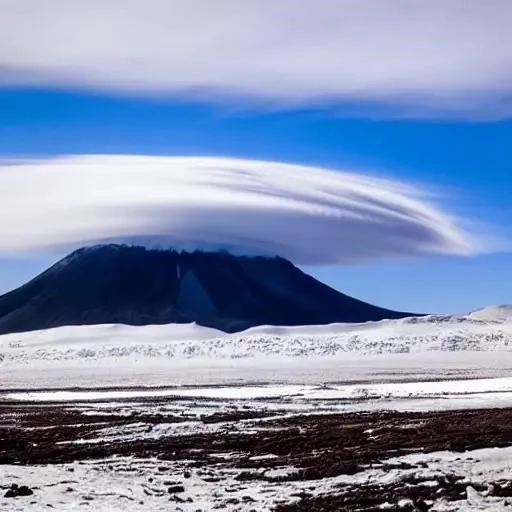Today is 09/11/2025․
The phrase “Ice Age Boiling Point” might sound like a contradiction, a scientific oxymoron plucked from a dystopian novel․ Yet, this dramatic juxtaposition perfectly encapsulates the breathtaking shifts our planet has undergone throughout its vast geological history․ Far from being a static, unchanging sphere, Earth has consistently oscillated between periods of profound glaciation and epochs of remarkable warmth, each transition a testament to its incredible, dynamic systems․ Understanding these monumental shifts, particularly how our world moved from frigid ice ages to warmer climes, is not merely an academic exercise; it is a critically important endeavor, offering invaluable insights into the planetary forces that continue to shape our shared future․ Today, as we grapple with unprecedented environmental changes, looking back into Earth’s deep past can illuminate the path forward, revealing the intricate dance between atmospheric composition, oceanic currents, and geological activity․
Consider the “Little Ice Age,” a relatively recent blip in geological time, spanning roughly from the 14th to the mid-19th century․ This period, characterized by cooler temperatures and expanded glaciers in Europe and other regions, is largely attributed by many scientists to a reversal of the North Atlantic Oscillation (NAO), a powerful atmospheric-circulation pattern profoundly influencing winter weather across the North Atlantic․ But what truly ignites such a dramatic shift, setting off a cascade of climatic events? Evidence from trapped air in polar ice, a veritable time capsule, reveals fascinating details about past atmospheric pressure and even ice sheet elevation, painting a vivid picture of these historical cool-downs․ However, to truly grasp the concept of an “Ice Age Boiling Point”—a rapid, transformative warming—we must journey much further back, into epochs where the very composition of the atmosphere underwent radical, planet-altering changes․
| Geological Period | Climate State | Key Characteristics | Primary Driver/Mechanism | Modern Relevance |
|---|---|---|---|---|
| Late Palaeozoic Ice Age (~370 to 260 Million Years Ago) | Intense Glaciation & Abrupt Warming | Possibly the most intense glaciation for complex lifeforms; prolonged low CO2 followed by a rapid 4-fold CO2 rise․ | Sustained low CO2 followed by massive CO2 emissions from Large Igneous Provinces (LIPs)․ | Demonstrates the profound impact of CO2 fluctuations on global climate and life; |
| Little Ice Age (~14th to mid-19th Century) | Regional Cooling | Expanded glaciers, cooler temperatures in Europe; not a global ice age but a significant cooling trend․ | Reversal of the North Atlantic Oscillation (NAO), persistent high atmospheric pressure over Greenland․ | Highlights regional atmospheric patterns and their influence on climate, even in shorter timescales․ |
| Present Day (Late Cenozoic Ice Age Interglacial) | Anthropogenic Warming | Rapid increase in global temperatures, rising CO2 levels, extreme weather events․ | Human-induced greenhouse gas emissions, primarily CO2 and methane, from industrial activities․ | Emphasizes the urgency of understanding past climate drivers to inform present-day mitigation strategies․ |
Understanding Earth’s dramatic past climate shifts provides crucial context for our present and future․
Reference: Nature Geoscience Article: Rapid rise in atmospheric CO2 marked the end of the Late Palaeozoic Ice Age
Perhaps the most compelling example of an “Ice Age Boiling Point” comes from the Late Palaeozoic Ice Age (LPIA), a period of intense global glaciation that began roughly 370 million years ago and persisted for an astonishing 80 million years․ During this epoch, continental ice sheets accumulated across high to mid-latitudes, maintained by what scientists now understand was a prolonged, unprecedented period of remarkably low atmospheric CO2․ Then, approximately 294 million years ago, something truly extraordinary occurred: atmospheric CO2 levels rose abruptly, a staggering four-fold increase that effectively released Earth from its penultimate ice age; This dramatic shift, meticulously documented through boron isotope records, profoundly transformed the Early Permian into a significantly warmer world, setting the stage for a biodiversity increase and the eventual rise of amniotes․ Expert perspectives suggest that this colossal carbon release was largely driven by large-scale magmatism, specifically from Large Igneous Provinces (LIPs), acting as a “natural carbon release event” that fundamentally reset the planet’s thermostat․ It’s a powerful illustration of how massive geological forces can rapidly alter atmospheric composition and, consequently, global climate․
The intricate dance between Earth’s systems, orchestrating these colossal climate transitions, is a subject of ongoing scientific fascination․ While orbital variations, known as Milankovitch cycles, certainly set the stage for ice age conditions by influencing solar radiation, they don’t solely dictate drastic cooling․ Rather, they initiate changes that are then amplified by powerful feedback mechanisms, with atmospheric greenhouse gas concentrations—especially CO2 and methane—playing a pivotal role․ During recurring ice ages, for instance, approximately one-third of the CO2 present in the atmosphere during warmer interglacial periods was drawn down into the deep ocean, a natural carbon sequestration experiment on an immense scale․ Furthermore, the total air content trapped in polar ice provides invaluable data on past atmospheric pressure, offering clues about ice sheet elevation and the interplay of stationary waves and the subtropical jet stream․ These complex interactions, from the ocean’s role in CO2 regulation to the subtle shifts in atmospheric pressure, collectively underscore the delicate balance that governs our planet’s climate, a balance that can be dramatically tipped by significant changes in any one component․
As we stand in 2025, observing our planet’s accelerating warming trend, the lessons from Earth’s deep history resonate with undeniable urgency and, remarkably, with a profound sense of hope․ Our capacity to meticulously reconstruct past climates, deciphering the ancient atmospheric signals trapped in ice cores and geological records, is an unparalleled achievement of modern science․ This sophisticated understanding of past “Ice Age Boiling Points” empowers us with critical knowledge, revealing the immense power of atmospheric composition to drive planetary change․ By integrating these deep historical insights with cutting-edge climate modeling and innovative technological solutions, we are uniquely positioned to navigate the challenges of our present climate trajectory․ The narrative of Earth’s past is not one of inevitable doom, but rather a compelling story of dynamic change and resilience․ Learning from these grand transitions, particularly how our world emerged from frozen epochs into periods of warmth, inspires us to proactively shape a sustainable and thriving future, demonstrating that informed action, guided by scientific understanding, can indeed chart a more optimistic course for humanity․






